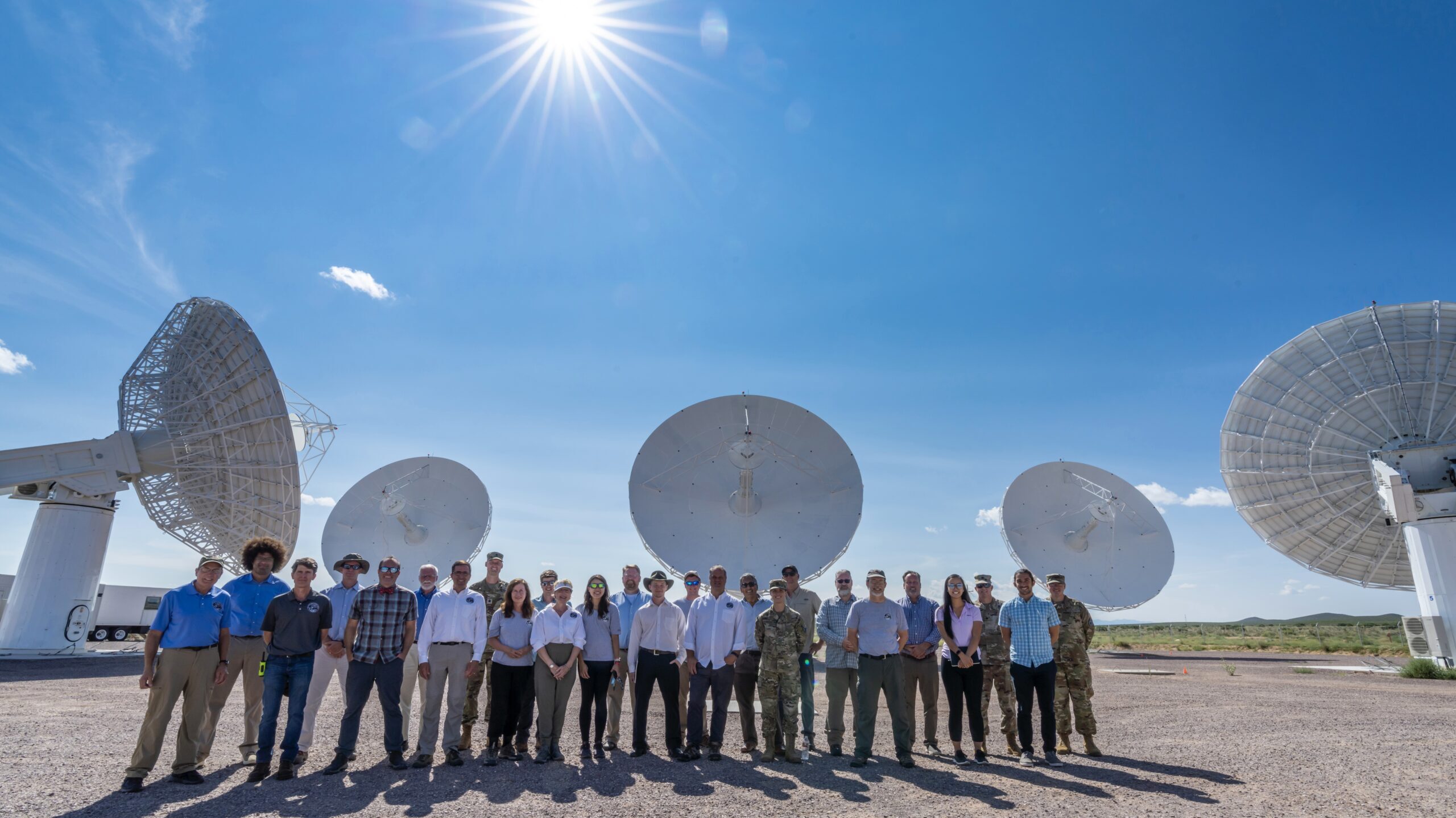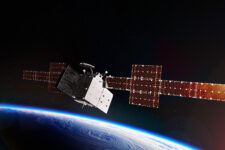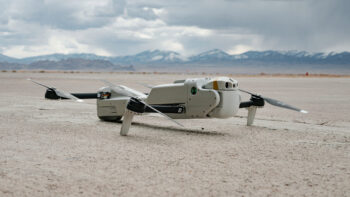
Engineers from Johns Hopkins APL and government partners stand in front of the Deep Space Advanced Radar Concept (DARC) in White Sands Missile Range, in August 2021. The Space Force intends to site on DARC system in Australia. (Photo: Johns Hopkins APL/Craig Weiman)
AMOS 2023 — Pooling capabilities for space domain awareness (SDA) as part of AUKUS would not only improve trilateral security, but also lay the groundwork for a global network for keeping tabs on satellites and dangerous space debris in Earth and, eventually, cislunar orbits, according to a new report by The MITRE Corporation.
“The United States, Australia, and the United Kingdom have formed a pact for naval nuclear propulsion information sharing named AUKUS. If modeled similarly, this trilateral alliance could have a lot of promise to help tackle the challenges that make the space environment less stable,” explains the report, presented today to the annual Advanced Maui Optical and Space Surveillance Technologies Conference (AMOS) conference and provided to Breaking Defense in advance.
“Each nation possesses unique advantages, technological capacities, and strategic geographic positions that, when combined, have the potential to significantly advance humanity’s understanding of what’s going on in space,” it adds.
In particular, the report focuses on the mutual benefits for the US and Australia of tighter collaboration on SDA — a relationship that already is in its formative stage, for example with the US planning to put one of three planned sites for the Deep-Space Advanced Radar Capability (DARC) system.
“In our collaboration with Australia through a space-AUKUS pact, we can employ a ‘partnering to win’ strategy drawing methods from behavioral economics to nudge global participants toward a common space awareness vision,” Nathan Dailey, the lead author of the MITRE report, told Breaking Defense today.
The report asserts developing an interlinked, compatible network of “sensors, radars and tracking systems” would not only improve the survivability of trilateral military space systems, but also help underpin the establishment of a trusted allied space supply chain.
“Through AUKUS, measures could be taken to enhance space resilience against military or natural crises by ensuring that countries maintain minimum viable capabilities across key elements of the supply chain for the space industry. This may involve concentrating on the components necessary to reconstruct vital space-based assets, as well as systems for disaggregating and enhancing existing capabilities. This process should involve AUKUS governments collaborating to integrate new and emergent technology firms into the supply chain of the space industry,” the paper states.
In addition, MITRE lays out an approach to creating a Global Space Domain Awareness (GSDA) Concept “to foster a decentralized and modular approach to incrementally building an SDA network covering Earth and cislunar regions.” The concept would be based on “decentralized dynamic sensor tasking” software — such as MITRE’s Sensor Network Autonomous Resilient Extensible (SNARE) that has been under Space Force testing since 2021 — and “ad hoc requests to vetted sensors,” the paper explains.
“GSDA ecosystems can interconnect across Earth and Cislunar regions, cultivating partnerships that build enduring operational advantages. The primary architectural feature of GSDA is a protocol that enables GSDA-compliant ecosystems to plug into a global network of interconnected GSDA ecosystems, overcoming barriers to collaboration and expanding mutually beneficial capacity, capability, and resiliency of space forces,” it elaborates.
One key to implement the GSDA concept is keeping information sharing limited to that essential to perform the necessary SDA functions, something the paper calls the “minimum viable information.”
“If it included an emphasis on Minimum Viable Information (MVI) and transparent exchange, a new AUKUS treaty for space has the potential to fundamentally alter the nature of international space relations,” MITRE concludes.






















